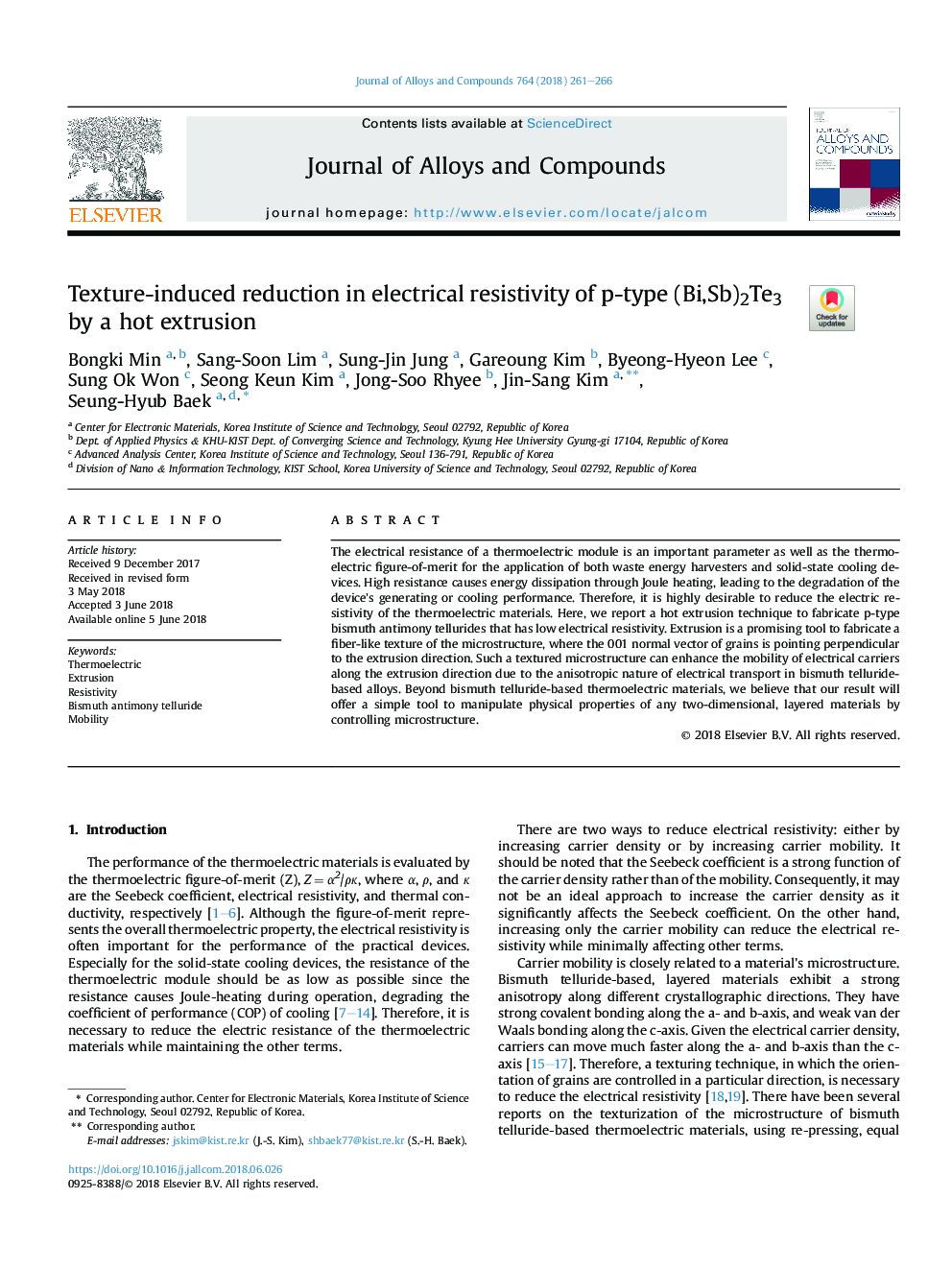| Article ID | Journal | Published Year | Pages | File Type |
|---|---|---|---|---|
| 7990645 | Journal of Alloys and Compounds | 2018 | 6 Pages |
Abstract
The electrical resistance of a thermoelectric module is an important parameter as well as the thermoelectric figure-of-merit for the application of both waste energy harvesters and solid-state cooling devices. High resistance causes energy dissipation through Joule heating, leading to the degradation of the device's generating or cooling performance. Therefore, it is highly desirable to reduce the electric resistivity of the thermoelectric materials. Here, we report a hot extrusion technique to fabricate p-type bismuth antimony tellurides that has low electrical resistivity. Extrusion is a promising tool to fabricate a fiber-like texture of the microstructure, where the 001 normal vector of grains is pointing perpendicular to the extrusion direction. Such a textured microstructure can enhance the mobility of electrical carriers along the extrusion direction due to the anisotropic nature of electrical transport in bismuth telluride-based alloys. Beyond bismuth telluride-based thermoelectric materials, we believe that our result will offer a simple tool to manipulate physical properties of any two-dimensional, layered materials by controlling microstructure.
Related Topics
Physical Sciences and Engineering
Materials Science
Metals and Alloys
Authors
Bongki Min, Sang-Soon Lim, Sung-Jin Jung, Gareoung Kim, Byeong-Hyeon Lee, Sung Ok Won, Seong Keun Kim, Jong-Soo Rhyee, Jin-Sang Kim, Seung-Hyub Baek,
